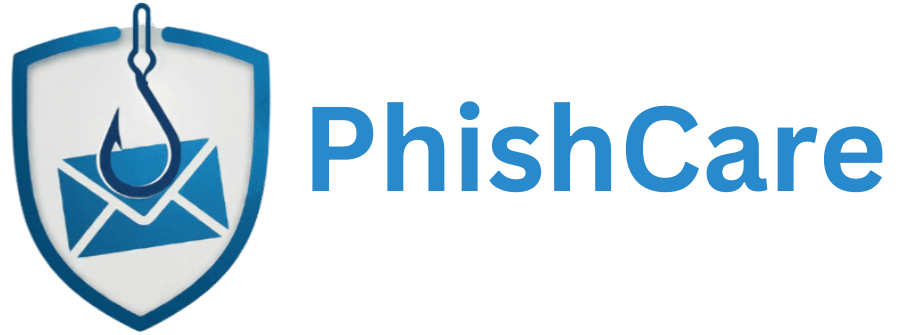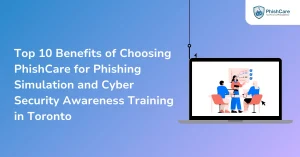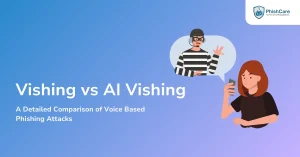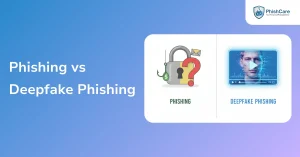In the past few years, deepfake technology has moved from harmless entertainment to one of the most concerning tools in cybercrime. Using artificial intelligence, attackers can create hyper-realistic videos, voices, and images that impersonate real people. These fake digital identities are increasingly being used for phishing, vishing, and other social engineering attacks.
Recent Deepfake Statistics show a rapid increase in their misuse for fraudulent purposes. According to cybersecurity research, deepfake attacks have surged over 300% year over year. They are no longer confined to high-profile political hoaxes; they are infiltrating workplaces and corporate communication channels.
That is why many organizations are turning to phishing simulation services like PhishCare, a cutting-edge phishing simulation tool that helps businesses detect, analyze, and prevent sophisticated phishing and social engineering attempts.
PhishCare enables organizations to run phishing attack simulations and measure how employees respond to deceptive emails, messages, or even AI-generated content. These simulations help companies build stronger awareness and resilience against evolving threats.
How Deepfakes Amplify Social Engineering Threats
1. Manipulating Trust Through AI-Generated Identities
Cybercriminals use deepfakes to create realistic impersonations of executives, colleagues, or vendors. Imagine receiving a video message from your CEO instructing you to transfer funds urgently. Without training, even vigilant employees might comply.
Deepfake Statistics reveal that over 70% of employees cannot distinguish an AI-generated voice from a real one during corporate communication. This demonstrates the need for anti-phishing training for employees and regular phishing simulation services that expose staff to similar deception tactics safely.
2. The Role of Phishing in Deepfake Scams
Phishing remains the primary channel for deploying deepfake content. Attackers craft faker emails, phishy emails, or links leading to fraudulent sites that host deepfake videos. These tactics exploit human curiosity and urgency.
By running simulated phishing campaigns, organizations can train employees to pause before clicking suspicious links or downloading files. A managed phishing simulation service helps identify departments most at risk and ensures tailored cyber security awareness training for each team.
3. Business Email Compromise and Payroll Fraud
Deepfakes have taken business email compromise (BEC) scams to a new level. Instead of just spoofing an executive’s email, attackers now add a convincing voice or video message requesting confidential data or urgent payments.
Phishing prevention training and continuous phishing attack simulations teach employees to verify such requests using secondary channels. A well-structured corporate phishing awareness program ensures everyone knows how to validate internal communications properly.
4. Exploiting Remote Work Environments
With remote and hybrid work models, employees rely heavily on digital communication platforms. This makes them ideal targets for AI-driven manipulation. Attackers use deepfake voices during video meetings or share doctored recordings through collaboration tools to extract information.
A phishing simulation tool like PhishCare allows organizations to simulate these exact conditions, conducting cybersecurity phishing tests that reveal how employees handle deceptive interactions online. These exercises help reinforce secure communication habits and critical thinking.
5. Psychological Engineering and Emotional Manipulation
Social engineering exploits human emotions like fear, urgency, and empathy. Deepfakes enhance this manipulation by providing visual or auditory proof that appears authentic. For instance, a deepfake message of a distressed colleague requesting emergency funds can easily bypass skepticism.
To combat this, organizations rely on phishing simulation services combined with phishing resilience training. These programs build awareness and reduce the instinct to react emotionally to deceptive cues.
Key Deepfake Statistics Every Organization Should Know
1. Sharp Growth in Corporate Deepfake Attacks
Recent studies indicate that 1 in 5 companies worldwide has encountered a deepfake-related phishing attempt in the past year. The majority were executed through email or collaboration platforms.
When coupled with phishing simulation service reports, organizations gain measurable insight into employee vulnerabilities. Such phishing risk assessments highlight how effective training programs are in identifying deepfake-driven scams.
2. Financial Impact of Deepfake Phishing
Global losses from deepfake scams surpassed $1 billion last year, and Deepfake Statistics predict these losses will double by next year. Phishing-related incidents, including those involving remote access trojans and data theft, make up a large portion of this figure.
Organizations conducting regular email phishing tests and phishing attack simulations are significantly less likely to fall victim. The simulations help uncover risky behaviors before real attackers can exploit them.
3. The Growing Role of Social Media
Deepfake scams often begin on social platforms. Attackers harvest public photos and videos to create fake identities, then use these profiles to connect with employees and initiate phishing attempts. This trend blends catfishing with corporate espionage.
To defend against these tactics, companies deploy employee phishing awareness training and workplace phishing awareness campaigns. These programs teach staff to identify fraudulent profiles, email phishing scams, and messages attempting to gather sensitive information.
4. Regulatory Implications and Compliance Requirements
Regulators are increasingly holding organizations accountable for cybersecurity lapses, including those stemming from deepfakes and phishing. Standards like GDPR, HIPAA, and ISO 27001 emphasize employee training and documented security and awareness training initiatives.
A managed phishing simulation service such as PhishCare supports compliance by maintaining detailed phishing simulation reports, tracking participation, and verifying that employees complete anti-phishing training for employees regularly.
5. The Link Between Deepfakes and Credential Theft
Deepfake-powered phishing often aims to harvest login credentials. Attackers combine convincing audio or video messages with fake login pages to steal usernames, passwords, and MFA codes. Even with multi factor authentication, careless employees can compromise access.
Running cybersecurity phishing tests alongside phishing prevention training helps employees recognize these traps. Teaching staff to verify URLs and never share codes through unverified channels is crucial.
Deepfakes Demand Smarter Awareness
As Deepfake Statistics continue to rise, the boundary between reality and deception grows thinner. Attackers no longer rely solely on traditional phishing emails; they now weaponize AI to create highly believable impersonations.
The best defense is a combination of advanced technology and human awareness. Through consistent phishing simulation services, employee phishing awareness training, and managed phishing simulation service programs like PhishCare, organizations can build resilience against both phishing and deepfake-driven manipulation.
In an era where seeing is no longer believing, proactive defense is not optional, as it is essential.
FAQs
1. How do deepfake statistics relate to phishing simulation services?
Deepfake statistics show that cybercriminals increasingly use AI-generated videos and voice clones to enhance phishing attacks. A phishing simulation service helps organizations identify how employees respond to these realistic scams by mimicking such deepfake-driven social engineering attempts in a safe environment.
2. Why should businesses include phishing attack simulation in their cybersecurity strategy?
Phishing attack simulation plays a vital role in understanding employee vulnerability. When combined with deepfake statistics, it highlights how easily staff can be deceived by advanced impersonation attempts. Regular simulations using a phishing simulation tool like PhishCare ensure employees are better prepared against both traditional and AI-powered phishing scams.
3. Can cybersecurity awareness training reduce the impact of deepfake phishing scams?
Yes. Cybersecurity awareness training teaches employees how to spot unusual digital behavior, suspicious requests, and synthetic media signs. With phishing prevention training and anti-phishing training for employees, organizations build resilience against manipulation techniques that deepfake statistics show are rapidly increasing in frequency.
4. What role does a corporate phishing awareness program play in combating deepfake risks?
A corporate phishing awareness program not only educates staff about phishing scams but also integrates deepfake recognition into the training. Programs that include a phishing simulation service and cybersecurity phishing tests prepare employees to detect deceptive communications and verify authenticity before acting.








